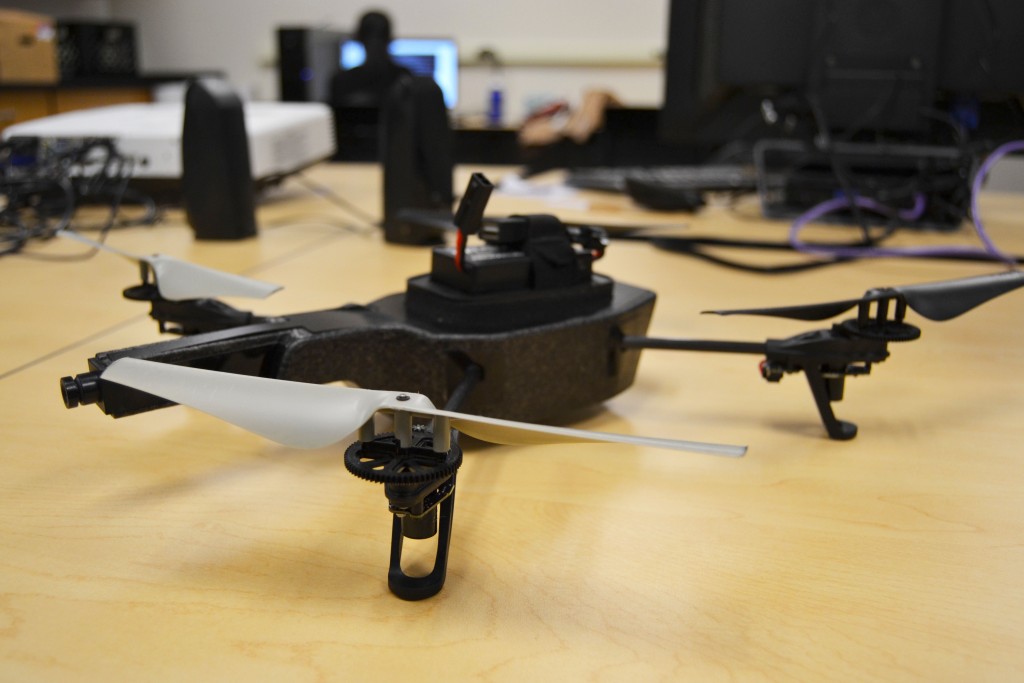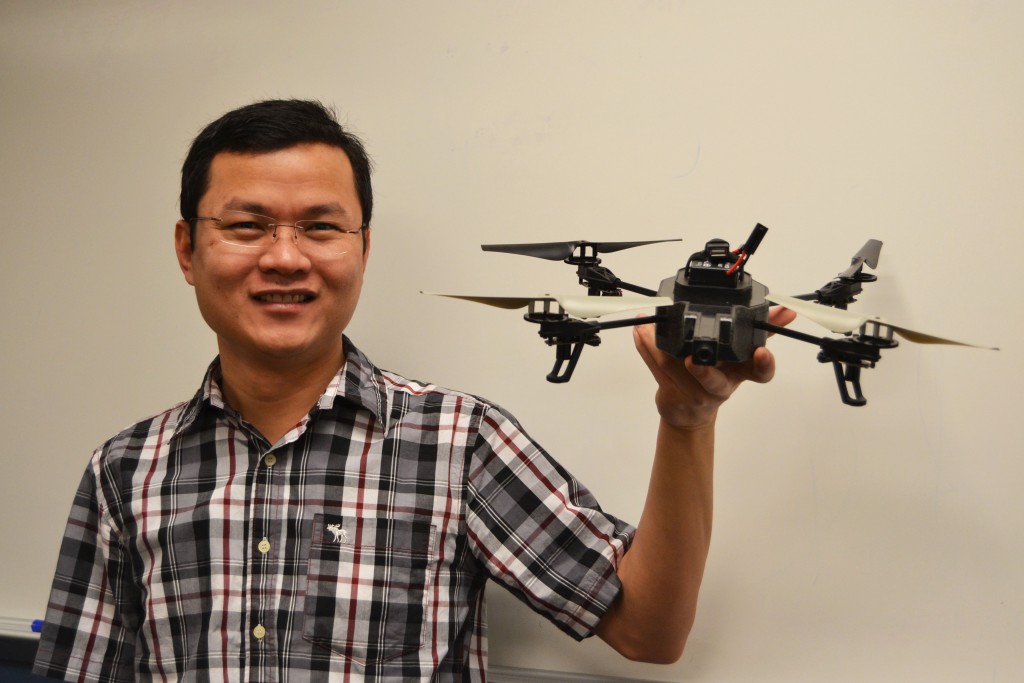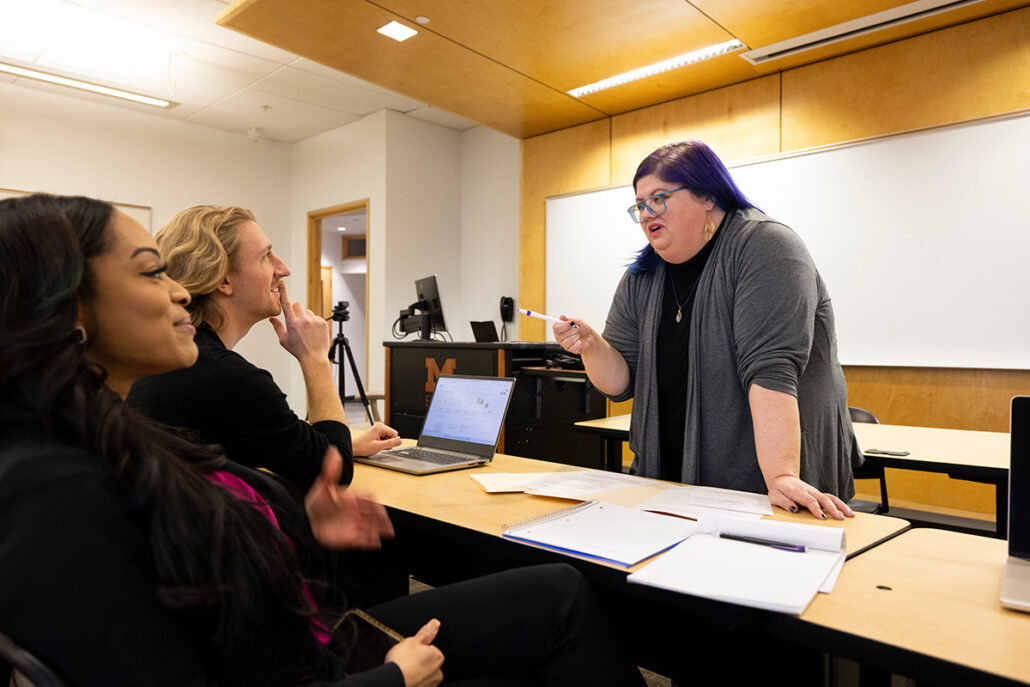CSIS Research Includes Drones, Software

THE RESEARCH
Dr. Mark Allison, Assistant Professor of Computer Science and Information Systems, is working with students on research that focuses on drones and software design. He brings nearly a decade of experience with software engineering and artificial intelligence to the project.
When asked to describe the research and its goals, Allison said, “This project investigates how multiple unmanned aerial vehicles (drones) may function as a team towards a common goal. We will apply software models to accomplish communication and collaboration in the context of search and rescue.”
He continued, “As drones become smaller, more capable and cheaper, we need to look to new ways of applying them to benefit humans. Current approaches to UAVs typically involve manual operation. As our machines become more complex, we need to minimize human interaction, we need software capable of making decisions on our behalf. I know visions of robot overlords may spring to mind- but… We crave more and more complex machines yet we want our interaction to be easy and intuitive. Our only solution is that invisible entity known as SOFTWARE. Our ultimate aim is to give a team of drones high level objectives (for example – Find the Cat). They should be capable of self-organization and collaboration to achieve the task if possible.”
THE PROJECT at UM-FLINT

Allison began the research when he joined UM-Flint in Fall 2014, building off of a previous project. “We had successfully applied software models in energy management and cloud computing. The application towards artificial intelligence seemed the next natural hurdle. It’s research; we constantly seek bigger dragons.”
The idea of individual drones working together is complex. Allison notes, “Human communication and cooperation to accomplish tasks is so rich and complex that we ourselves have not fully understood its intricacies in all our years on this blue planet. Our approach tries not to capture all this dynamism but to selectively apply concepts (we don’t want that slacker drone to go off and peruse a leisurely jaunt in the park). We want to use technology that has only matured in the last 10 or less years to revisit the challenges that were elusive. This research path is not simple. There are many difficult challenges, however an incremental approach is our best bet.”
- TECHNICAL DETAILS:
This research project uses Java as the general purpose language and
UML in modeling.
The mini-drone application uses JADE (Java Agent DEvelopment
Framework) scripting.
For energy management the project team has built their own language.
- STUDENT WORK INCLUDES
Building prototypes
Running tests on these prototypes
Collecting data
STUDENTS and RESEARCH
Anil Kumar Kuvvarapu, a Graduate Student Research Assistant (GSRA), has been working with Allison for over a year. He’s enjoyed his time in the lab and the complexity of the project: “I enjoy the challenge of coming up with new, authentic solutions to problems which are multidisciplinary. Such tasks are typically complex and require a lot of time, but the experience is worth it.”
Another GSRA, Sopheak Pouv, has been working with the research team since September 2015. He described why the project was a good fit for him: “the position requires students who understand programming language well, especially Java language. I have been involved in software development for almost 8 years. In addition, this research project is aligned to my interests and needs.” Already the project has offered him new experiences, “I can get many benefits from this research project. This is my first time writing Java code to work with mechanical devices like drones. I think it is a new dimensional experience.”
The team hopes their work will lead to drones being able to help in situations into which humans cannot or should not go. For example, buildings collapsed from fire or earthquakes. Allison added, “Secondarily, the quest will give insights into complex cyber-physical control systems with possible applications towards traffic control, automotive engineering, aerospace, etc.”
Allison was asked about the engaged learning opportunity such research offers students. He responded, “Let’s face it, our millennial students are tough to get impressed with technology; they have super telephones and smart cars. This challenge is even more difficult when the tools of your trade is theories, abstractions, and other intangibles. Outside of research, the drones may be used as a teaching tool. Somehow whenever students see an immediate reaction in real time (the drone moving up and down – and crashing, a lot of crashing), it brings a sense of concreteness to the principles, and of accomplishment.” He plans to integrate the research into his classes, noting, “there should not be a line drawn between research and teaching.”

Allison works to keep the experience approachable for his students, “This is an opportunity for students to experience challenges which fall outside the textbook and classroom. Working with minimal guidance. It is refreshing to see students transition from being guided to leading the exploration of their tiny sub topic. When they ask, ‘how do I get this to work?’, and I say ‘Beats me, if anyone knew then it wouldn’t be worth perusing – research, remember.’ You can see the moment when they realize that they have the opportunity and the empowerment to solve a tiny problem on their own without assistance. We just have to make the challenge not too difficult as to frustrate.”
Kuvvarapu also spoke to the benefit of such research, “The projects I have been working on at UM-Flint are extremely engaging. I don’t think there is anywhere else that I would have gotten this experience and learning climate. UM-Flint creates a very nurturing yet exciting learning environment to me. Upon graduation, I will most probably seek a job in the software industry, and with my research skills I am confident.”
For information on the Computer Science & Information Systems program, including research projects, visit umflint.edu/computer-science.
Portions of this post were compiled by Srikanth Reddy Bogala, Graduate Student in Computer Science

